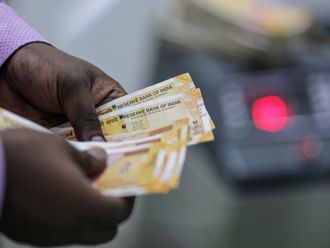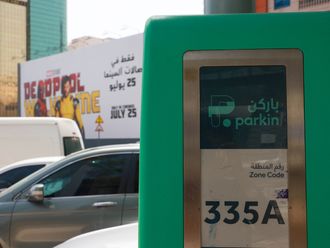Dubai: Heightened uncertainty brought on by the news that both Arabtec and Aldar Properties are looking to shareholders to help solve their funding needs spooked investors last week. This is a reminder to investors that financing remains an issue for many UAE companies given high debt levels, impact of the economic downturn, and growing oversupply in real estate. All will continue to weigh on the economy and stock market for the foreseeable future. Once again, investors are wondering, what's next?
The reaction was noticeably more bearish in Dubai than Abu Dhabi. This makes sense given the relative strength of the Abu Dhabi Securities Exchange General Index (ADI) compared to the Dubai Financial Market General Index (DFMG), which can be seen on the charts and is discussed below.
Investors will be watching closely to see how shareholders are handled in Arabtec and Aldar in regards to fairness, transparency and disclosure. This will impact the perception of current and future risk in UAE markets for investors. Regardless of this news, on a technical basis, both UAE stock markets continue to evolve normally, with the possibility of a recovery from the recent downtrend still in place, at least so far.
Dubai
Last week the DFMGI declined 43.74 or 2.62 per cent to close at 1,624.94, below the previous weeks low. Volume was lower with declining issues relative to advancing at 25 to 6, respectively, confirming the bearish tone.
For three of the past five weeks the DFMGI found support between 1618.01 and 1,619.24. This now becomes an important short term support zone, particularly 1,618, the low of the zone. But, more important is 1,597, the low of the downtrend channel.
The DFMGI broke through resistance represented by the top downtrend line two weeks ago and has since retraced back towards that line and closed just below it. Any line used on a chart to identify support or resistance should be looked as an "area" of price. So, in this case the DFMGI can still be considered to be holding the area of support of the top downtrend line. A retracement is normal after breaking through a key support or resistance level. The index still has a chance to recover in the foreseeable future if it can continue to hold above the 1,618 area. However, a break below 1,618 is a short term bearish sign and puts the DFMGI into uncertain territory.
A close above 1680.69 resistance, the high of two weeks ago, would need to occur for a clear signal that the recovery from the two and half month correction is back in place. Until then we could see a choppy market or further declines.
Abu Dhabi
The ADI has also started to retrace back to support of its top downtrend line, which is support. But, what is apparent from its chart relative to the DFMGI, is that the retracement has been less (selling pressure is lower), and it has not yet reached the line.
As discussed in previous weeks, the ADI also remains above its 200 period exponential moving average (ema) on the daily chart, which has turned up, while the DFMGI is back below the 200ema. We can also see this relative strength by looking at the difference in performance for the week.
The ADI dropped 14.68 or .53 per cent last week and closed at 2,737.65. Volume was essentially flat with the previous week, while advancing issues were about half declining, at 10 to 20, respectively. Notice the difference in the advance/decline numbers compared with the DFMGI.
Early in the week the ADI broke through previously identified resistance of 2,768.35, but it did not close above it. Subsequently, selling dominated the remainder of the week.
We may continue to see a retracement back towards the top downtrend line in the short term as a normal evolution of the price pattern.
Other potential support level is between 2,707 and 2,708, as well as the 200ema, now at 2,694.94.
More significant for the ADI is 2,690.37, the low of the downtrending channel, which is sitting just above support of the 200ema, on that day.
A daily close below that level changes the medium term outlook to bearish, and opens the door to more aggressive selling, and therefore a longer time until recovery.
Stocks to watch
Aramex continues to hold up well on a relative basis. The stock is well above its 200ema which is pointed up, and it has been consolidating for the past couple months forming a well shaped symmetrical triangle price pattern.
Typically, breakouts of these patterns can see strong moves. A move higher through resistance of Dh2.14 would signal a breakout to the upside. Closing below approximately Dh2.06 identifies a downside breakout.
Du, mentioned previously in this column, also continues to hold up well with a close above Dh3.00 a sign of strengthening, and close above Dh3.04 confirming.
Methaq Takaful Insurance continues to form a symmetrical triangle pattern on its chart but since it hasn't broken out yet, the chance of a failure to the downside has increased.
Either way, Methaq is likely to see an obvious pickup in volatility this week, one way or the other.
Bruce Powers, is a financial consultant, trader and educator based in Dubai, he can be reached at bruce@etf-portfolios.com












